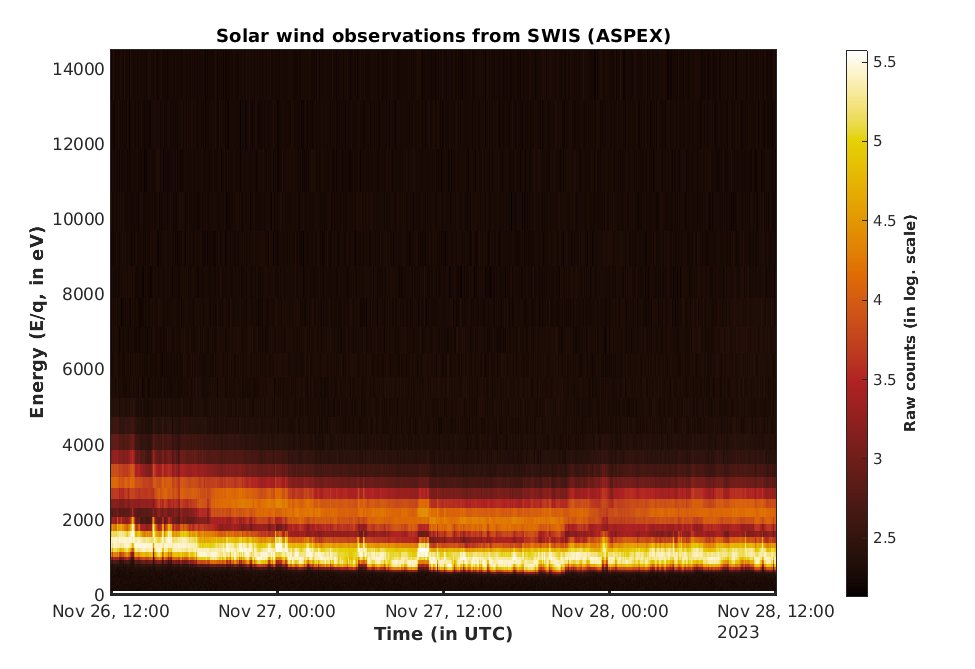ISRO’s Pioneering Solar Mission Marks Milestones with Operational SWIS and HEL1OS Spectrometers
Bengaluru, NFAPost: In a significant stride for the Aditya-L1 solar mission, the Indian Space Research Organisation (ISRO) announced the operational status of the Solar Wind Ion Spectrometer (SWIS), the second instrument in the Aditya Solar Wind Particle Experiment (ASPEX). The mission, which commenced on September 2, is poised to unravel mysteries surrounding solar wind dynamics.
The SWIS instrument, a crucial component of ASPEX, has successfully captured energy variations in proton and alpha particle counts over two days. ISRO’s statement highlighted that SWIS, activated on November 2, 2023, has exhibited optimal performance, complementing the already operational STEPS (SupraThermal and Energetic Particle Spectrometer).
ASPEX, equipped with cutting-edge instruments like SWIS and STEPS, is operating as expected on the Aditya-L1 satellite. The ASPEX payload has initiated measurements of solar wind ions, with SWIS utilizing its unique directional capabilities to provide precise measurements of solar wind protons and alpha particles.
The SWIS instrument operates with two sensor units boasting a remarkable 360° field of view each, operating in perpendicular planes. This setup enables comprehensive measurements of solar wind ions, primarily protons (H+) and alpha particles (He2+). The acquired energy histogram from November 2023 illustrates variations in proton and alpha particle counts, offering a snapshot of solar wind behaviour.
ISRO emphasized the significance of SWIS’s directional capabilities in addressing longstanding questions about solar wind properties, underlying processes, and their impact on Earth. The data collected by SWIS is expected to contribute significantly to the global understanding of solar wind dynamics.
Furthermore, ISRO provided an update on the Aditya-L1 mission’s other spectrometer, the HEL1OS X-ray spectrometer, which recorded the impulsive phase of solar flares during its first observation period in late October. Solar flares are sudden brightenings of the solar atmosphere, producing enhanced emissions across the electromagnetic spectrum.
The HEL1OS spectrometer, commissioned on October 27, is undergoing fine-tuning of thresholds and calibration operations. It has been actively monitoring the Sun for hard X-ray activities, capturing the first high-energy X-ray glimpse of solar flares.
The Aditya-L1 spacecraft, launched after the successful Chandrayaan-3 mission, underwent a trajectory correction manoeuvre in early October. The manoeuvre, lasting about 16 seconds, corrected the trajectory following the Trans-Lagrangean Point 1 Insertion manoeuvre conducted on September 19.
Aditya-L1, India’s maiden solar mission, holds a strategic position that allows continuous observation of the sun without being affected by eclipses or occultation. This positioning enables scientists to study solar activities and their real-time impact on space weather. The spacecraft’s data is expected to unveil the sequence of processes leading to solar eruptive events, contributing to a deeper understanding of space weather drivers.
As the Aditya-L1 mission continues to unfold its findings, the international scientific community eagerly anticipates the wealth of knowledge it promises regarding the enigmatic solar wind and its implications for our planet. ISRO’s pioneering efforts in solar exploration mark a remarkable chapter in India’s space endeavours, offering unprecedented insights into the dynamic and complex solar environment.





